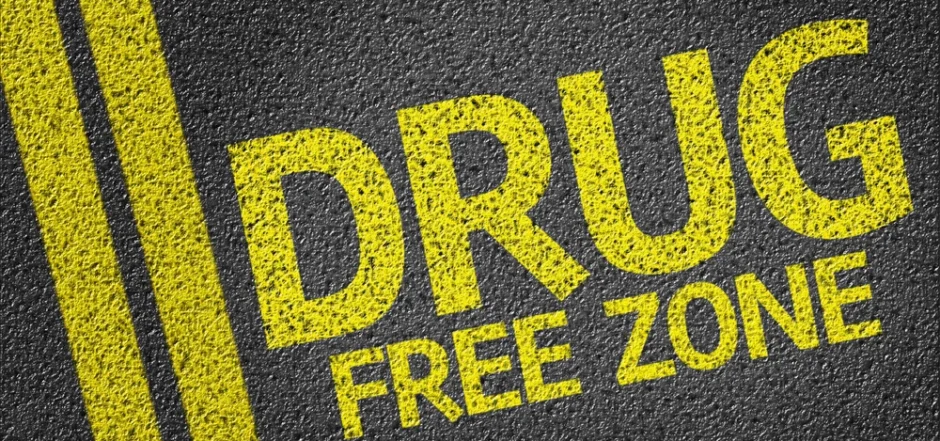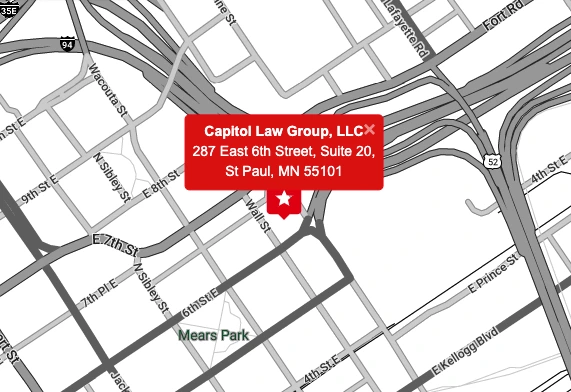How Can St. Paul Drug Crime Lawyers Beat ‘Drug-Free Zone’ Enhancements?

1982 may have been a watershed year in the War on Drugs. That was the year a cocaine overdose killed basketball phenom and Boston Celtics top pick Len Bias. Many observers compared Bias to Michael Jordan. In response, Congress passed incredibly harsh drug laws, including mandatory minimum prison sentences. A few jurisdictions still use mandatory minimums. Thankfully, Minnesota is not one of them.
Despite all these tough new laws, about a third of Americans are addicted to an illegal drug. That’s about the same proportion that faced such problems in 1982.
To stem the tide, many jurisdictions, including Minnesota, have moved away from failed mandatory minimums and toward penalty enhancements. Drug-free zone enhancements may be the most common ones, largely because they are easy to prove in court.
Sometimes, this ease of proof makes police officers and Ramsey County prosecutors overconfident. They add drug-free zone enhancements when the facts barely support such additional allegations. This lack of evidence gives St. Paul drug crime lawyers a way to beat these enhancements in court, or at least negotiate a favorable pretrial settlement agreement.
General Rules
The drug-free zone enhancement rules, and other definitions, are in Section 152.01 of the Minnesota Code. Generally, the below enhancements apply if the defendant committed the offense within 300 feet of a prohibited place.
To put that number into perspective, the world’s longest enchilada was 300 feet long. Thee hundred feet is also the length of a football field, without the end zones. Most people understand that second example a lot better than the first one.
In most states, the enhancement distance is 1,000 feet. That’s three football fields, which is a very long distance. So, many people, including many St. Paul drug crime lawyers, think drug-free zone enhancements don’t come up very frequently in Ramsey County.
But that’s not correct. Pretty much every dwelling, vacant lot, and street corner in St. Paul is within a football field of a park, school, or public housing complex. At least that’s what prosecutors think.
School Zones
According to subdivision 14a, a “school zone” is “any property owned, leased, or controlled by a school district or an organization operating a nonpublic school.” That’s a broad definition which includes a lot more than little red schoolhouses. It arguably includes athletic fields, educational annexes, and school district office buildings.
This law is obviously intended to target so-called schoolyard pushers. If there were no children within 300 feet, many Ramsey County judges are inclined to strike the enhancement provision. In many cases, that simple change could be the difference between a prison sentence and pretrial diversion.
St. Paul Drug Crime Lawyers and Park Zones
The subdivision 12a enhancement is one of the most over-used ones. It only applies to “an area designated as a public park” by any federal, state, or local government entity. This enhancement provision does not apply to places like:
- Church playgrounds,
- Open areas where children often play,
- Apartment complex or RV campground play areas,
- Homeowners’ association swimming pools and open spaces,
- Shopping mall play areas, even if they are outdoors, and
- Public athletic fields.
But many times, when they decide what charges to file, Ramsey County prosecutors pull up GPS maps of the location on their phones. If they see any green area within a football field’s length, they add 12a drug-free zone enhancements.
St. Paul drug crime lawyers especially deal with 12a enhancements in meth cases. Most of these offenses occur in private dwellings, and pretty much every city block in Ramsey County has at least one play area, especially in suburban neighborhoods. If prosecutors add enhancements to artificially make their cases look stronger, a St. Paul drug crime lawyer needs to stand up for your rights.
Public Housing Zones
Subdivision 19 is also very narrowly tailored. Yet many prosecutors act as if this enhancement applies to most of the apartment complexes in Ramsey County.
Mixed rental complexes are very common in Minnesota. Often, to obtain building permits for multifamily units, developers must promise to set aside a certain percentage of the units for low-income renters. If a complex has set-aside units, prosecutors assume the “public housing” enhancement applies, and they add it to the charging documents.
Simply stated, subdivision 19 doesn’t apply in these cases. This drug-free zone enhancement only applies to “any public housing project or development administered by a local housing agency.” The provision does not apply to mixed rental developments, landlords who accept Section 8 vouchers, or anything other than a pure, public housing development.
Flimsy enhancements like this one reveal a common prosecutorial ploy. Prosecutors inflate the charges beyond what the facts support, and then “generously” agree to drop the enhancements. Inexperienced St. Paul drug crime lawyers think they are getting good deals, but in reality, they should push harder. That’s why we never stop pushing.
Contact Experienced Attorneys
Drug-free zone enhancements are not as broad as prosecutors claim. For a free consultation with an experienced St. Paul drug crime lawyer, contact Capitol City Law Group, LLC. Go online now, call us at 651-705-8580, or stop by 287 6th St E, Suite 20, St Paul, MN 55101.




